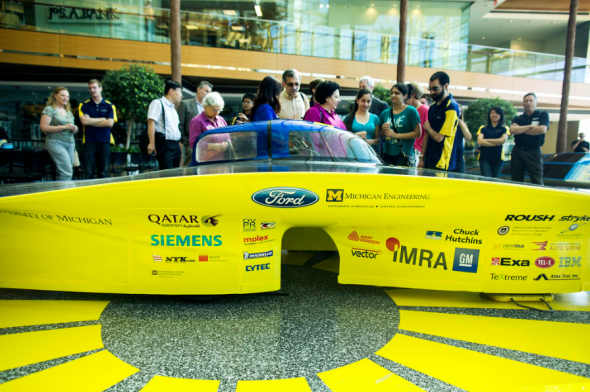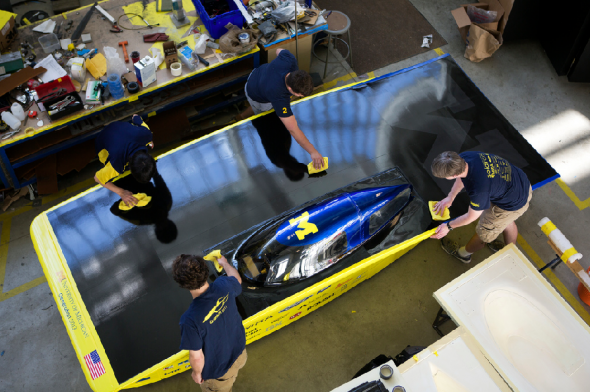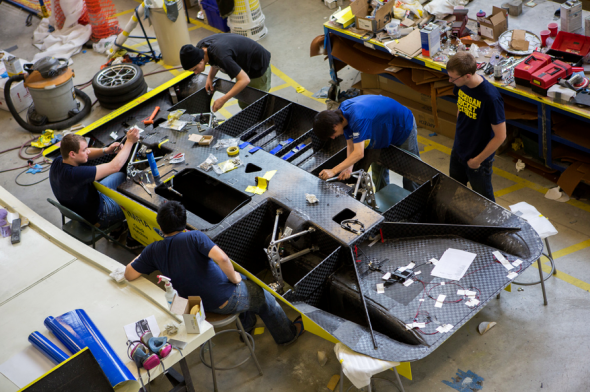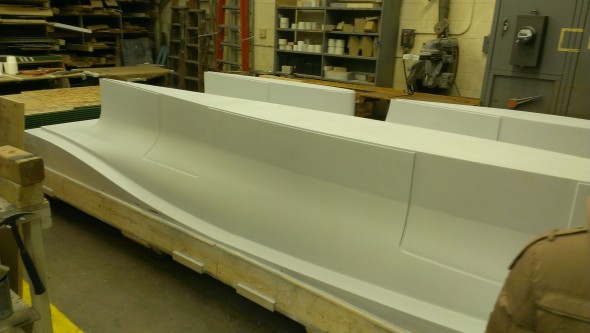Solar cars may sound like something out of the future, but students at the University of Michigan, and all over the world, design, build and race them each year. In fact, these aren’t just tiny school projects – these teams are sponsored by major auto manufacturers, and each car often ends up costing over a million dollars to create.
Recently, the University of Michigan Solar Car Team unveiled their 2013 car, “Generation”, at the GM Renaissance Center Winter Garden on June 18th to great fanfare prior to the upcoming World Solar Challenge in Australia.

The World Solar Challenge will be attended by over 47 teams from 26 different countries and covers over 1,800 miles.

While this is a friendly competition, desire to win is still fierce among teams. Many of the design and mechanical components of the Generation vehicle are top secret understandably, so we can’t say too much about the guts of the car. We were, however, able to speak with Operations Director and student Aaron Frantz, who gave us details of the current vehicle.

Generation was designed and built over the course of a year by over 100 student team members and is designed to be as lightweight and energy efficient as possible.

The University of Michigan Solar Car Program has four divisions dedicated to the successful creation of their Solar Cars:
Engineering: Composed of engineers who focus on the aerodynamics, body, mechanical, electrical and micro-electrical systems.
Business: Markets and advertises the team in order to procure the necessary resources to construct the state-of-the-art solar electric vehicle.
Strategy: Maximizes the performance of the vehicle on race day by performing extensive weather tests and also designing custom software to analzye and predict the most efficient way to run the race.
Operations: Takes care of all logistics and also maintains a safe and effective camp abroad for several months.
Precision Board Plus PBLT-20 and PBLT-30 HDU, donated by Coastal Enterprises, was used to make male plugs for the upper and lower surfaces, canopy and chassis. After being CNC machined by Excel Pattern Works, the Precision Board was coated with Duratec for a smooth finish before being sprayed with fiberglass by General Motors to create female molds which were then used to make carbon fiber tools.

Interesting facts about the car:
- There is no air conditioning, only a small vent for the driver to get fresh air
- Drivers are switched after no more than 6 hours
- The car is equipped with a speedometer and a rear-view camera
- A chase and lead vehicle accompany each solar-powered car throughout the course of the race
- The University of Michigan chase vehicle houses the Crew Chief and Head Race Strategist, who monitor all aspects of the solar vehicle using high-tech equipment through the entire course of the race
- The car has absolutely no transmission and is powered by a single “in-hub motor“
- Teams may only race between the hours of 8:00 AM to 5:00 PM, camping overnight where ever they happen to be at 5:00.
Until the start of the World Solar Challenge in October, Generation will be undergoing extensive testing to ensure safety and reliability for the race.
Be sure to check back in this fall for an after race update and pictures from the Australian Frontier.
Precision Board Plus PBLT-20 machined by Excel Pattern Works prior to being coated with Duratec and sprayed with fiberglass:
